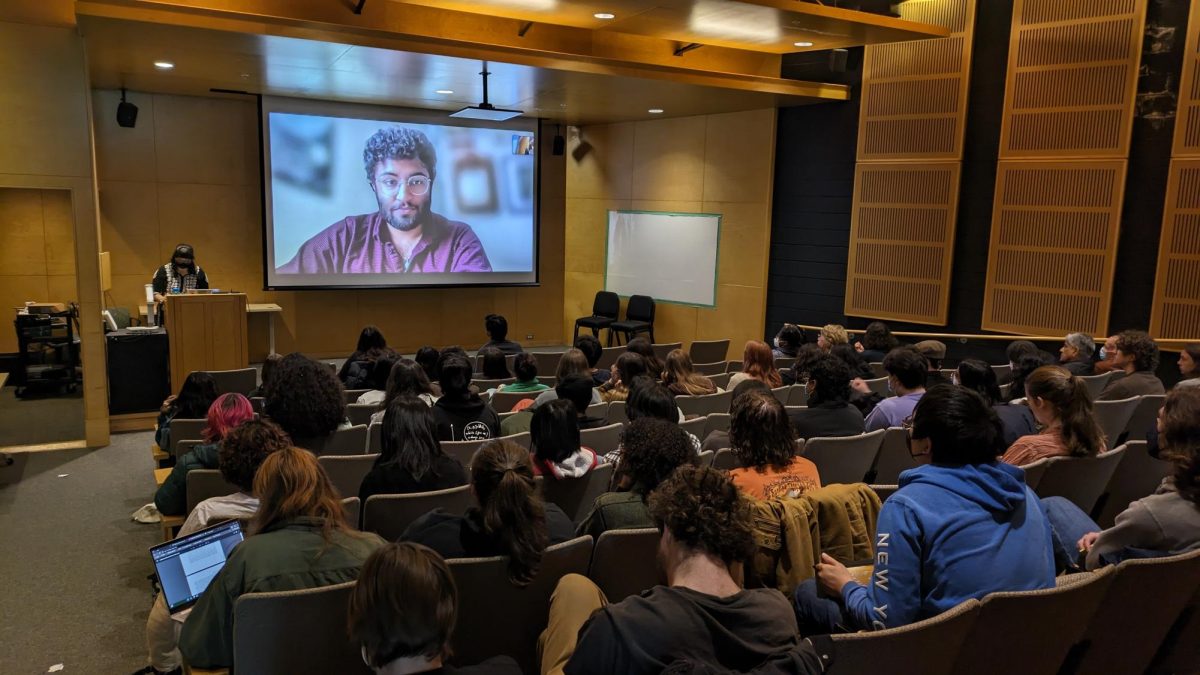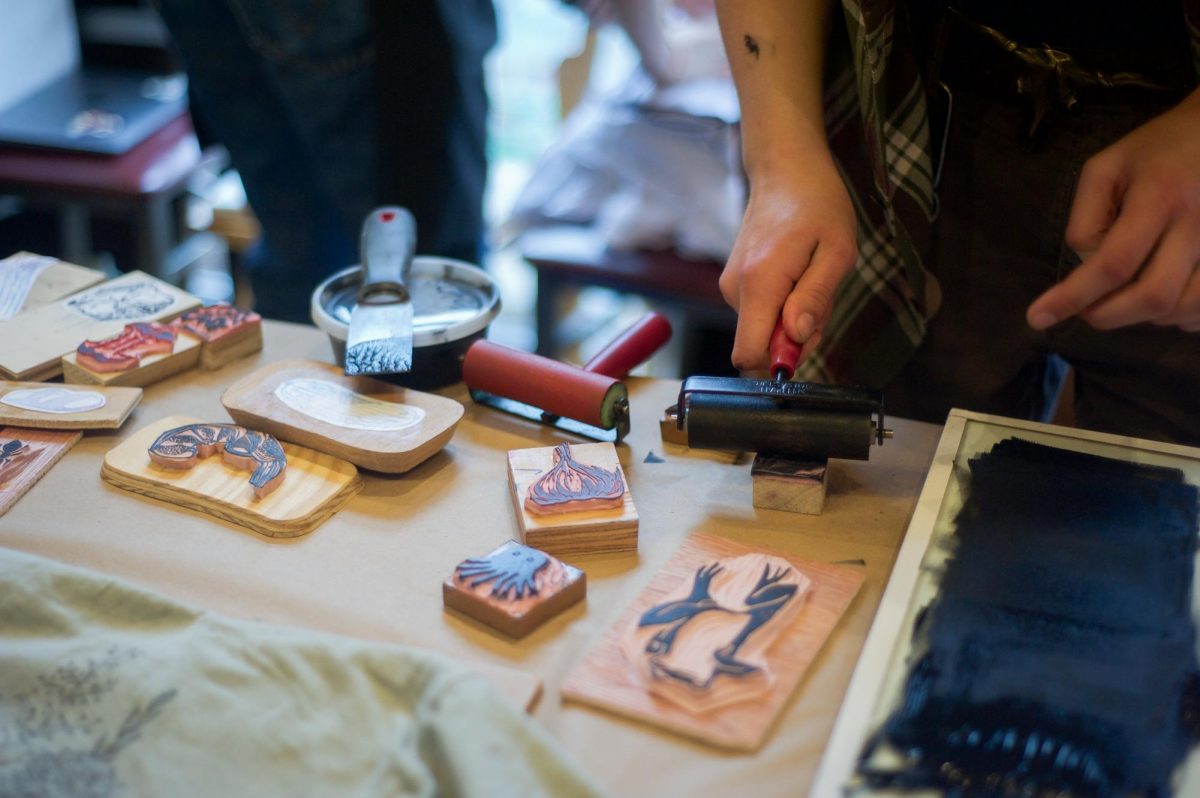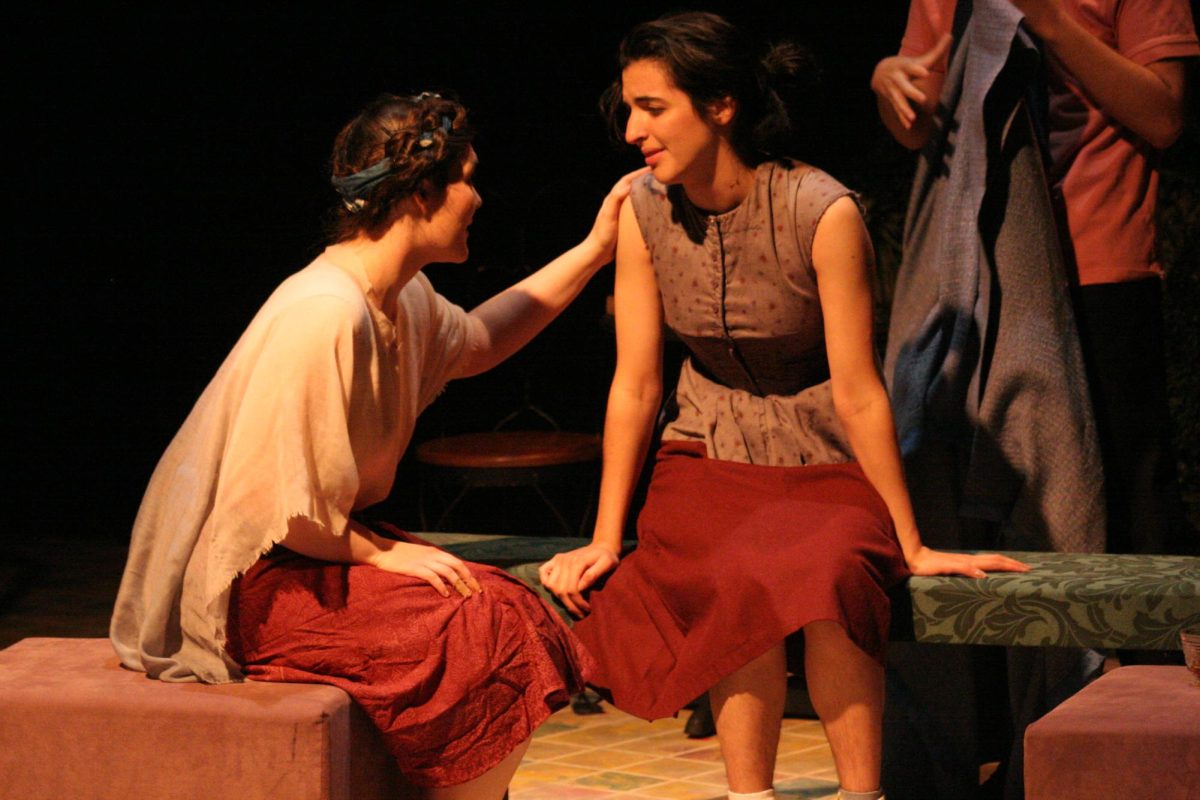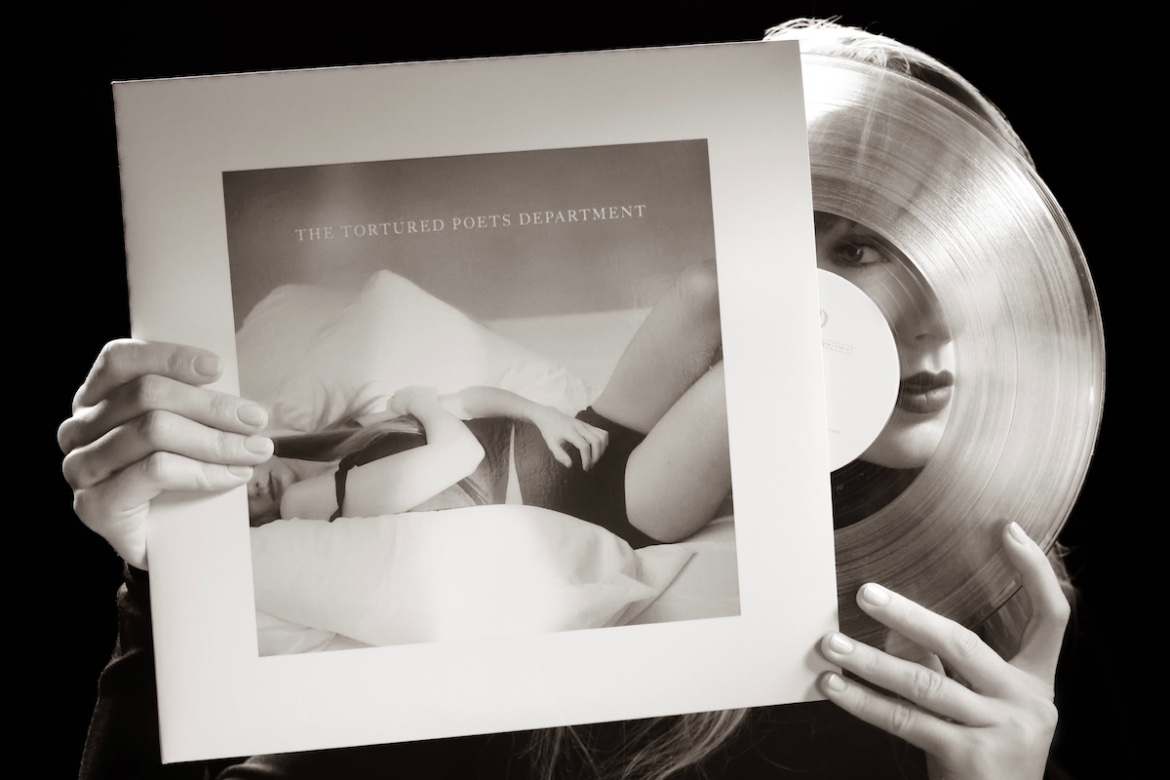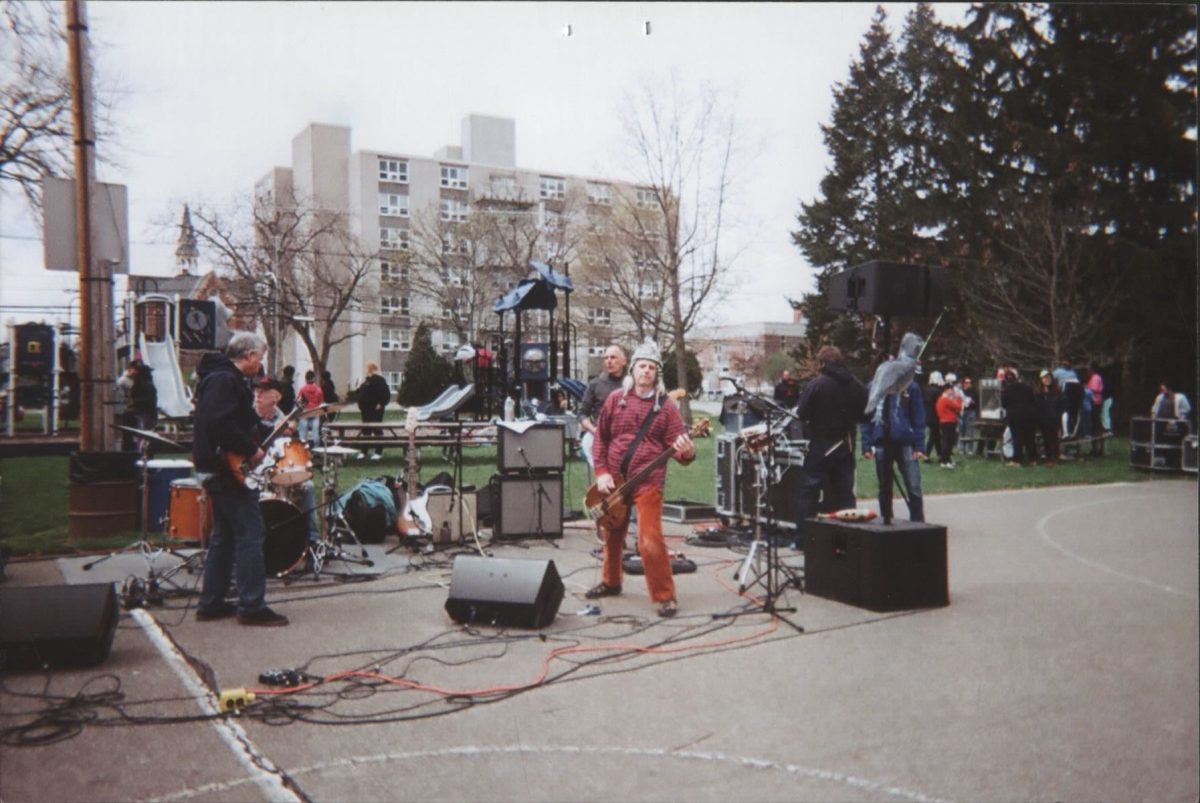AAArt Collective Kicks Off Third Biennial Event Series
March 10, 2017
The third Asia America Art Collective will commence this evening with a 7:30 p.m. screening of Kenneth Eng’s My Life in China in the Adam Joseph Lewis Center for Environmental Studies’ Hallock Auditorium, followed by a late night ’Sco performance by Yaeji, v1984 and College senior Rachel Katz, who makes music under the name Xuan Rong. The collective is a biennial event series geared toward highlighting artists who identify as Asian or part of the Asian and Pacific Islander Diaspora. This year’s events will include a mix of workshops, screenings, mixed-media, audiovisual installation and spoken word and musical performances.
In addition to calling attention to the work of Asian and Asian-American artistic communities, AAArt Collective will address the immense diversity of these communities, in an effort to dispel misconceptions of any sort of standard, monolithic Asian identity or narrative.
“I personally identify … as part of a larger Asian diaspora in the U.S.,” College junior Elka Lee-Shapiro wrote in an email to the Review. “But how I identify changes all the time. Being Asian American at Oberlin, an institution that is predominantly white, has encouraged me to become more engaged with Asian American and POC organizing, issues, and politics.”
Lee-Shapiro, along with College senior Holly Hoang spearheaded the series’ organization, with help from College senior Miles Ginoza. For Hoang, interest in the collective and artistic activism organically came out of a growing sense of community with friends she found her sophomore year.
“It was a rather unstable time for me because I had just transferred out of the Conservatory … and into the College, where I was having a difficult time figuring out how to navigate these new intellectual and social spaces,” Hoang wrote in an email to the Review. “In my exploring, I met a lot of new friends who were part of the Asian- American community on campus and also found out about this collective that a number of students were in the midst of planning since the previous summer. Art has always been an undeniably important part of my life, and slowly, Asian American community building, activism, and advocacy did, too.”
All three organizers also view having these artists on campus as an exciting opportunity not only to meet people whose work they have personally admired for a long time in many cases, but also to engage the Oberlin community in social and political dialogue.
“For me, going to a show and seeing Asian and Asian-American DJs, producers [and] musicians always gives me warm and fuzzy feelings,” wrote College senior Miles Ginoza in an email to the Review. Ginoza organized the ’Sco performance. “It’s inspiring to see Asian and Asian-American folks up there thriving in their element.”
In the past, the collective has gathered APID artists from a broad range of disciplines, bringing such artists as the Blue Scholars, a Seattle-based hip-hop duo, photographer and filmmaker Mia Nakano, stand-up performer Hari Kondabolu, writer Derek Kirk Kim, writer and producer Sahra Vang Nguyen, actor Ryan Wong and performance artist D’Lo to Oberlin. This year, organizers feel they have put together a balanced event series of performances, lectures and screenings, as well as more interactive events like workshops and question and answer sessions.
“Art spheres in Oberlin and at large have traditionally been predominantly white, and I think it’s important to make space for and celebrate artists who occupy identities that are marginalized within mainstream art spheres and are engaged with resistance work,” Lee- Shapiro wrote.
Liz Moy, a member of Chinatown Art Brigade, a gentrification resistance group whose activism centers in New York City’s Chinatown, will give a workshop on art and activism Saturday. The Allen Memorial Art Museum currently has “MacArthur Nurses,” a painting by Jenifer K. Wofford, another Chinatown Art Brigade member, on display in the exhibition Conversations: Past and Present in Asia and America. Wofford, whose work addresses a number of intersecting issues including race and gender, will also give a talk Saturday afternoon.
“I really like their approach to art and activism, and wanted to share their work with the Oberlin community,” Lee-Shapiro wrote.
Gentrification isn’t the only issue facing APID artistic communities. As spaces where artists of color have built lives and communities become whiter and more expensive, aspects of their cultures and art are often appropriated by white artists, either out of affinity or to exotify their brands.
“There’s this huge issue with Asian aesthetics being appropriated in electronic music by white artists,” Ginoza wrote. “You see it a lot in vaporwave where random white producers will have names with Japanese characters that don’t really mean anything or just have random Japanese characters on their cover art. So this idea of reappropriation and reclaiming an Asian identity, sort of utilizing and repackaging these sensational Asian aesthetics is really interesting to me.”
Another focus of the event series is the vast diversity of the Asian and Asian-American identities. Hoang chose to bring Eng to Oberlin specifically because his documentary struck her as uncannily similar to her own parents’ immigration story, delving into experiences and ways of life she feels are frequently sidelined in discussions of roots and identity.
“When I watched it for the first time, it was really as if I was watching my own dad talking on screen,” Hoang wrote. “It meant a lot to be able to see someone share their story in such a visible way because it feels like a narrative that isn’t always highlighted when speaking to migration experiences within the APID community at Oberlin.”
The documentary centers on a family from rural southern China, incorporating regional minority languages and speech patterns as well as largely unexplored perspectives on manual labor and the Chinese restaurant industry as ways of life many depend on. Hoang felt she could follow the thread of her own family narrative through these aspects of the film, which also depicts the lack of awareness surrounding mental illness in these communities.
“As one who has been involved with the Asian-American community here, I’ve found there are these moments when certain faces and certain narratives are prioritized,” Hoang wrote. “Not only is it disheartening but emotionally isolating, and bringing Kenneth and his documentary to campus is a way to bring these stories back into those spaces.
Non-APID students and community members are also welcome and encouraged to attend. Organizers hope the series will contribute to an atmosphere of greater understanding and inclusion across the board, but have asked that audiences and participants be respectful and aware of the space they occupy, approaching these events not only as enjoyable experiences but also as opportunities for learning and growth.
“For all, I hope these events will be inspiring and educational,” Lee-Shapiro wrote. “In many mainstream spheres, there is limited representation of APID people and issues. I hope that through these events, people at Oberlin can gain better understanding [about] the diversity within Asia America, and learn from artists engaged in great work.”
All program events are free and open to the public.
Friday, 7:30-9:30 p.m. in Hallock Auditorium: film screening and question and answer session with filmmaker Kenneth Eng
Friday, 10 p.m. – 1 a.m. in the ’Sco: performance featuring Yaeji, v1984 and Xuan Rong
Saturday, 11 a.m. – 2 p.m. in Wilder 112: workshop with Chinatown Art Brigade member Liz Moy
Saturday, 1-2 p.m. in the Alumni Center’s Baron Art Gallery: mixed-media installation with Yaeji
Saturday, 2:30-4 p.m. in the Allen, Classroom 1: artist talk and viewing by Chinatown Art Brigade member Jenifer Wofford
Saturday, 7:30-8:30 p.m. in the Cat in the Cream: spoken word performance by Troy Osaki





